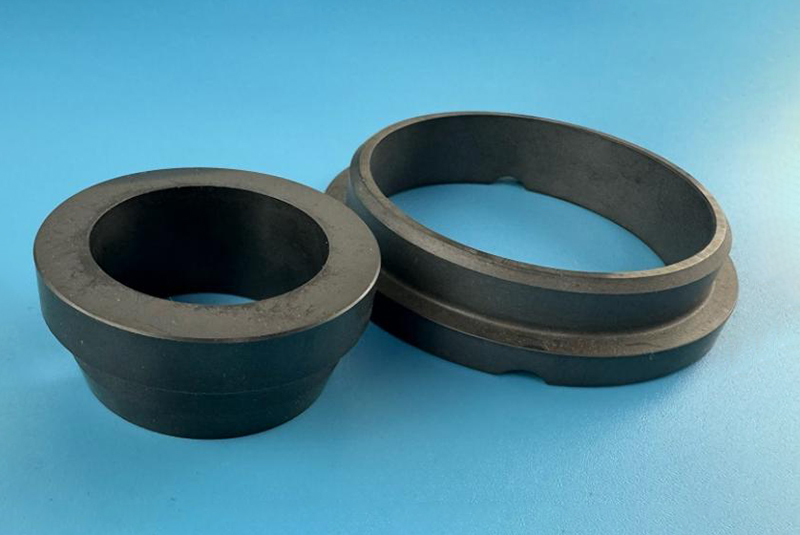Boron Nitride Lubricants VS. Graphite Lubricants

Introduction
Lubricants are essential for reducing friction, wear, heat generation, and operating noises between moving parts in machinery. Otherwise, there would be lots of damage, and the lifespan of the equipment would be decreased. Two common types of lubricants used in industrial applications are boron nitride (BN) and graphite lubricants. Both of them are effective solid lubricants with different properties that make them better suited for certain applications.
Here, this article is going to compare the features and uses of boron nitride lubricants and graphite lubricants. Hope that you can find the perfect lubricants for your projects with such information.
BN Lubricants & Graphite Lubricants
Hexagonal boron nitride (HBN) is a ceramic powder lubricant.
The 2D structure of HBN allows different parts of machinery to slide easily, and friction would be avoided consequently. Additionally, it has a high-temperature resistance of 1200 °C even in an oxidizing atmosphere, which is much higher than other lubricants. With these outstanding features, HBN lubricants are used in high-end industries such as space vehicle manufacturing.
Figure 1. HBN Structure
Graphite lubricants are one of the most commonly used dry lubricants.
Such lubricants can stand up to 350 °C in oxidizing environments and even higher in non-oxidizing surroundings. Thanks to these characteristics, they are often used in applications such as locks or bearings. You can find them everywhere including air compressors, railway track joints, open gear, ball bearings, etc.
[1]
Figure 2. Graphite Structure
Related reading: Boron Nitride Overview: Properties, Production, and Uses
Benefits of BN Lubricants
Boron Nitride lubricants have several advantages over graphite and other lubricants.
l For one, HBN lubricants are highly resistant to oxidation and thermal degradation, which makes them ideal for use in high-temperature applications. They are also chemically inert, meaning they do not react with other materials and are compatible with a wide range of substances. In contrast, graphite lubricants are less resistant to thermal degradation and can oxidize at high temperatures.
l Another competitiveness of HBN lubricants over graphite is their ability to reduce friction in both dry and wet conditions. These lubricants have a low coefficient of friction and are effective in reducing friction between two surfaces, even in the absence of a liquid lubricant. In contrast, graphite lubricants require a liquid carrier, such as oil or water, to be effective. Graphite lubricants can’t work in vacuum environments as well.
Advantages of Graphite Lubricants
Graphite lubricants also have excellent lubricity in the following situations.
l Graphite lubricants are also electrically conductive, which makes them useful in applications where electrical conductivity is required.
l Graphite has numerous good points over oil lubricants. It is mainly used as a dry lubricant but can also be dispersed in oil. Compared with oil lubricants, graphite doesn’t leave sticky residues that attract debris or dust.
Other Solid Lubricants
Other types of lubricants, such as molybdenum disulfide (MoS2) and polytetrafluoroethylene (PTFE), also have their unique properties.
MoS2 lubricants are effective in reducing friction under high loads and extreme pressures. It has better lubrication performance than graphite since it can be used in vacuum surroundings while graphite cannot. The maximum work temperature of MoS2 is 400 °C.
PTFE lubricants have excellent chemical resistance and low friction coefficient. It is widely used as an additive in lubricating greases and oils. And PTFE could bear temperatures up to 260 °C.
A range of materials including rare-earth fluorides and even diamonds could be employed as solid lubricants as well.
Conclusion
In short, BN lubricants are ideal for use in high-temperature and chemically harsh environments, while graphite lubricants are effective in reducing friction and wear in low to medium-temperature applications. The choice of lubricant ultimately depends on the specific requirements of the application, such as temperature, pressure, and chemical compatibility. Advanced Ceramic Materials (ACM) offers high-quality hexagonal boron nitride and related products at reasonable prices. Please visit https://www.preciseceramic.com/ for more information.
Reference:
[1] Pantha, B. (2012). Semiconducting hexagonal boron nitride for deep ultraviolet photonics [Photograph]. https://www.researchgate.net/publication/258712674_Semiconducting_hexagonal_boron_nitride_for_deep_ultraviolet_photonics
{{item.content}}
LEVE A REPLY
{{item.children[0].content}}
{{item.content}}










